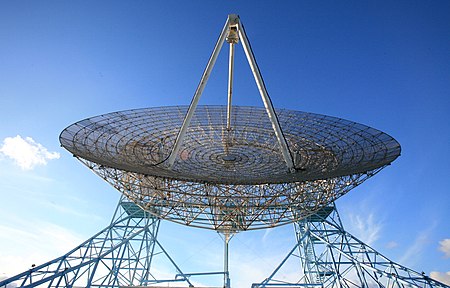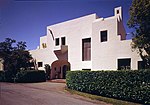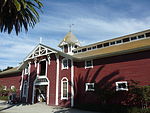Stanford Dish

The Dish, also known as the Stanford Dish, is a radio antenna in the Stanford foothills. The 150-foot-diameter (46 m) dish was built in 1961 by the Stanford Research Institute (now SRI International). The cost to construct the antenna was $4.5 million, and was funded by the United States Air Force. In the 1960s the Dish was used to provide information on Soviet radar installations by detecting radio signals bounced off the moon.Later on, the Dish was used to communicate with satellites and spacecraft. With its unique bistatic range radio communications, where the transmitter and receiver are separate units, the powerful radar antenna was well-suited for communicating with spacecraft in regions where conventional radio signals may be disrupted.At one point, the Dish transmitted signals to each of the Voyager craft that NASA dispatched into the outer reaches of the solar system. In 1982 it was used to rescue the amateur radio satellite UoSAT-1.
Excerpt from the Wikipedia article Stanford Dish (License: CC BY-SA 3.0, Authors, Images).Stanford Dish
Reservoir Road,
Geographical coordinates (GPS) Address Nearby Places Show on map
Geographical coordinates (GPS)
| Latitude | Longitude |
|---|---|
| N 37.4083 ° | E -122.179 ° |
Address
Reservoir Road 504/506
94304
California, United States
Open on Google Maps








